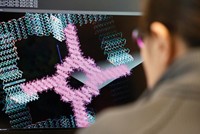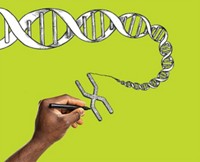Advertisement
Grab your lab coat. Let's get started
Welcome!
Welcome!
Create an account below to get 6 C&EN articles per month, receive newsletters and more - all free.
It seems this is your first time logging in online. Please enter the following information to continue.
As an ACS member you automatically get access to this site. All we need is few more details to create your reading experience.
Not you? Sign in with a different account.
Not you? Sign in with a different account.
ERROR 1
ERROR 1
ERROR 2
ERROR 2
ERROR 2
ERROR 2
ERROR 2
Password and Confirm password must match.
If you have an ACS member number, please enter it here so we can link this account to your membership. (optional)
ERROR 2
ACS values your privacy. By submitting your information, you are gaining access to C&EN and subscribing to our weekly newsletter. We use the information you provide to make your reading experience better, and we will never sell your data to third party members.
Biological Chemistry
Life As We Don't Know It
by Ivan Amato
December 1, 2008
| A version of this story appeared in
Volume 86, Issue 48
IF YOU THINK OF LIFE on Earth as a magnificent incarnation of natural technology, then life has the classic double-edged character of all powerful technologies. This technology has produced a wondrous diversity of beings displaying a gorgeous marriage of form and function on hierarchical levels that span the range from cells to rain forests and beyond. Yet it also has created pathogens that indifferently kill millions of people each year, ecological disasters that wipe out species, and intelligent beings that deliberately perpetrate catastrophes on similar scales.
On Nov. 14, I attended a "discussion" at the Woodrow Wilson International Center for Scholars in Washington, D.C., titled "Synthetic Biology: Coming Up Fast!" It made me wonder whether the scientific community might be approaching another Promethean moment, like the one associated with the emergence of nuclear technology last century and that ever since has committed humanity to shepherding nuclear technology's promise while containing its perils.
The discussants were Denise Caruso, executive director of the not-for-profit Hybrid Vigor Institute, a consultancy "dedicated to interdisciplinary and collaborative problem solving," and Rick Weiss, formerly a science writer with the Washington Post and now a senior fellow with the D.C.-based think tank Center for American Progress (CAP). The two chatted comfortably in a faux on-stage living room. CAP cosponsored the event with the Wilson Center's Project on Emerging Nanotechnologies. The driver of their discussion is a cadre of scientists and entrepreneurs who run companies with names like Synthetic Genomics and who aim to create, exploit, and perhaps unleash new-to-the-world biological constructs.
Like synthetic chemists who make artificial molecules, synthetic biologists synthesize biological units—such as genes, chromosomes, and entire genomes—in order to replicate, alter, build upon, or otherwise create synthetic biological entities. By taking biology in new directions, which some have expressed in sound-bites as "genetic engineering on steroids," synthetic biologists contend that they might solve some of the world's most vexing health, environmental, and energy conundrums.
And they just might. Think of inserting a synthetic chromosome into a bacterium so that it single-handedly converts cellulose into fuel or decontaminates a Superfund site and you will begin to think like a well-intentioned synthetic biologist. Deputy Assistant Managing Editor Stu Borman and Associate Editor Britt Erickson covered some of the field's promise and risks in the past two issues (C&EN, Nov. 17, page 62, Nov. 24, page 28).
What concerns me is that the lofty ambitions of synthetic biologists could come at costs that we quite literally cannot imagine. After all, said Caruso, who has examined synthetic biology extensively, "biology is a tremendously complex system, which we don't know so much about, and we are releasing it into a complex environment where we don't have any idea what the long-term consequences might be."
On top of that, she continued, is the likelihood that the all-too-human foibles of greed, stupidity, malice, and buffoonery will render synthetic biology's cost-benefit balance even harder to predict. "The technologies and products for creating synthetic components are already affordable and widely available to virtually anyone with access to the Internet, a credit card, and a shipping address," Caruso has written. In time, we may have to contend with a new class of scoundrels—synbio hackers.
The cinematic magnitude of the possibilities would be merely entertaining if they weren't on this side of the fiction line. A few years ago, scientists at the State University of New York, Stony Brook, chemically synthesized a working poliovirus (Science 2002, 297, 1016). To drill in the reality that they had made the viral particle, they referred to it as C332,652H492,388N98,245O131,196P7,501S2,340.
This is not a call for moratorium, and Caruso did not lobby for one either. Synthetic biology is coming, but we should address it with our eyes wide open—it will come with its own Promethean burden for humanity to bear.
Views expressed on this page are those of the author and not necessarily those of ACS.




Join the conversation
Contact the reporter
Submit a Letter to the Editor for publication
Engage with us on Twitter